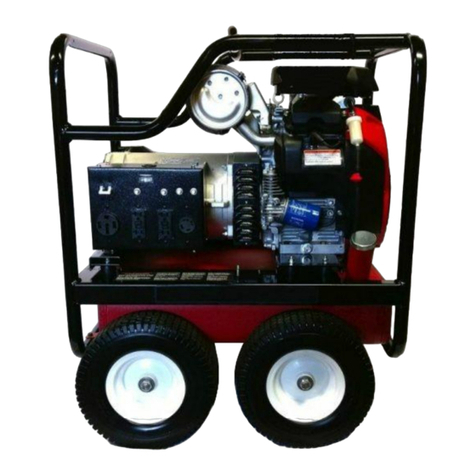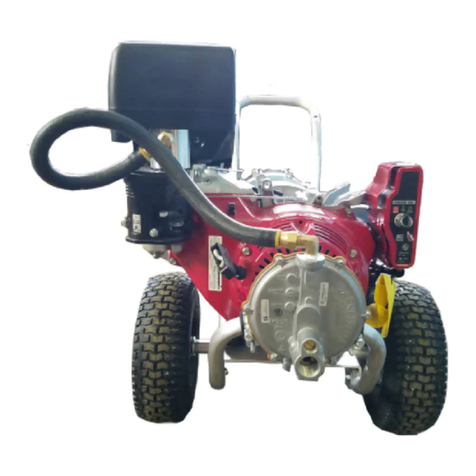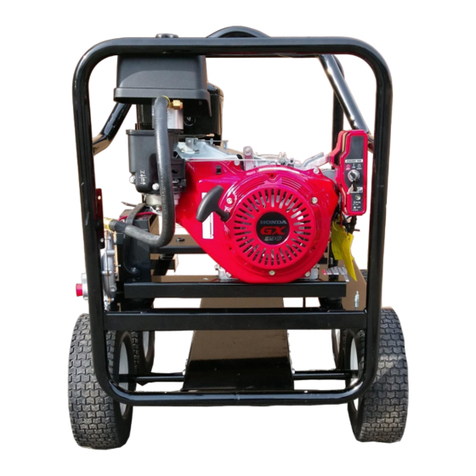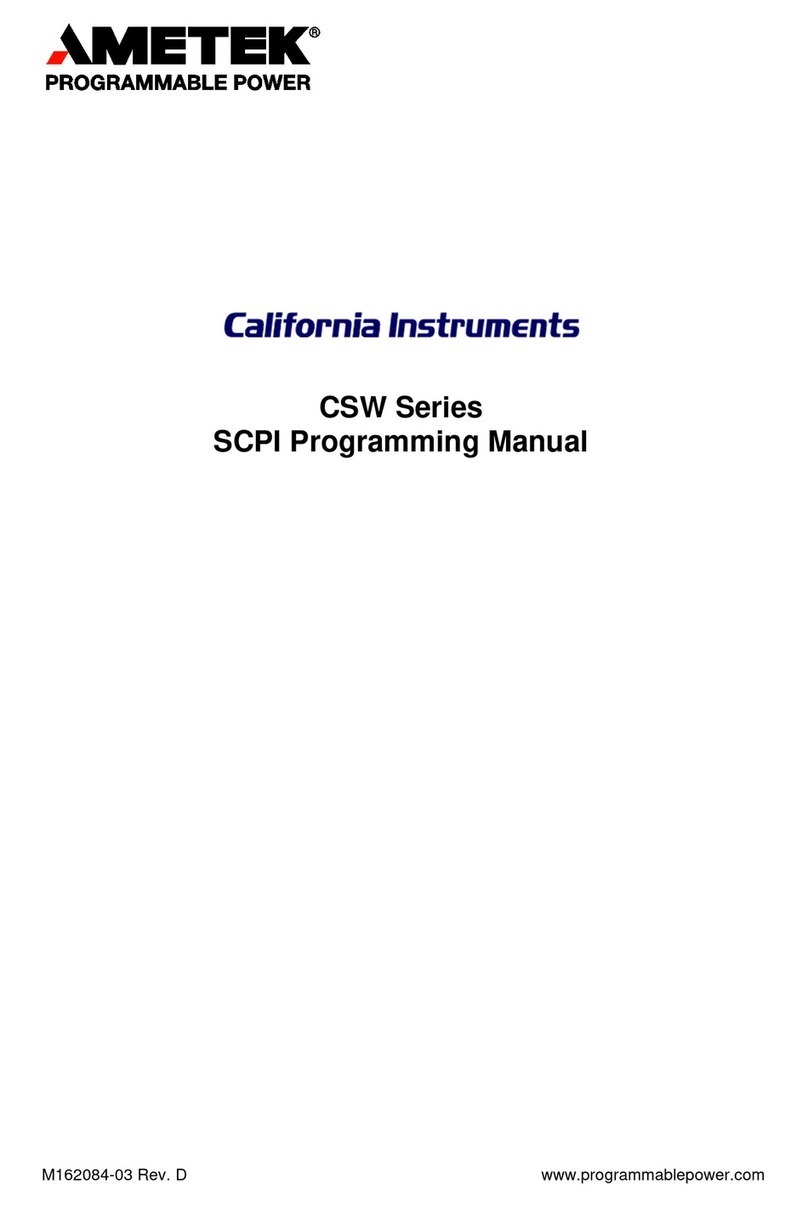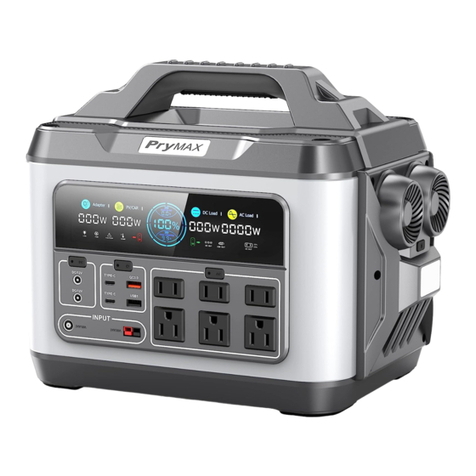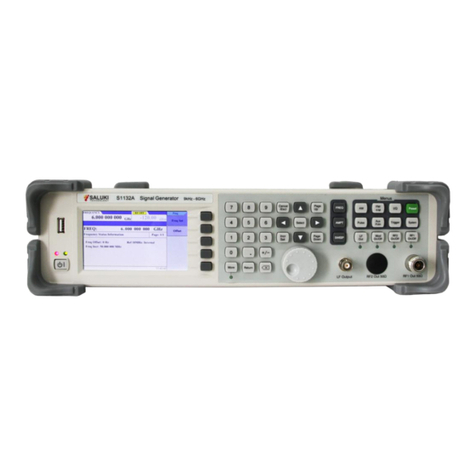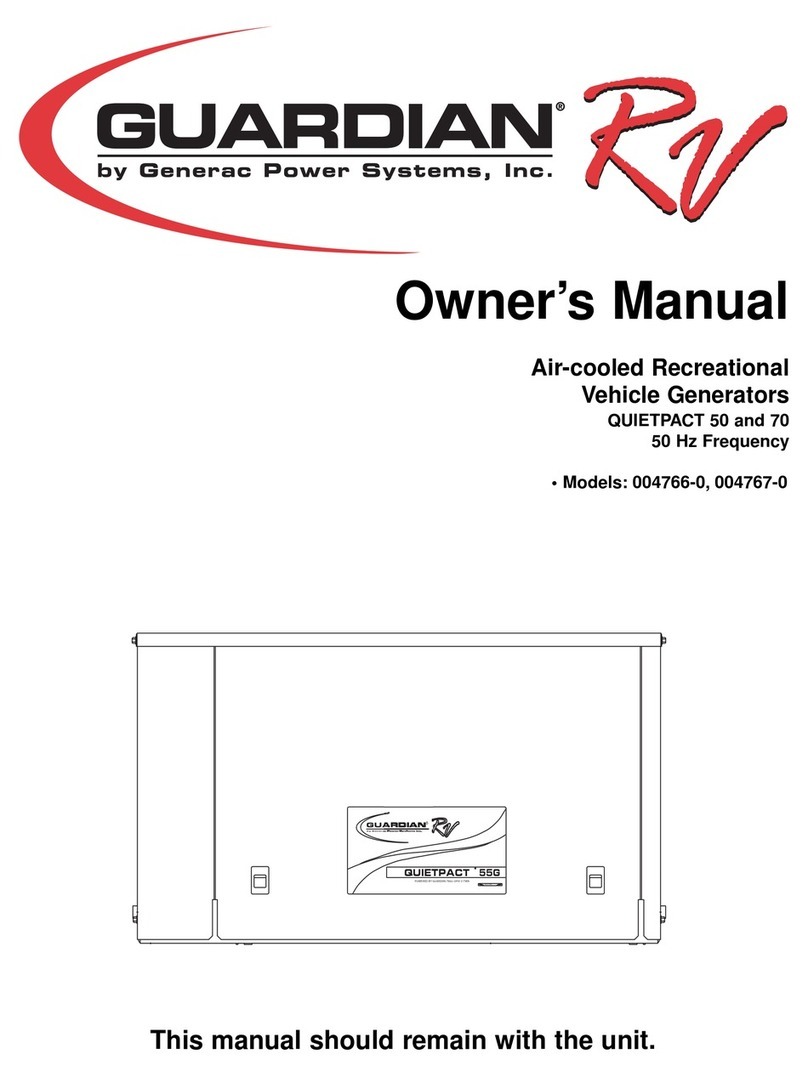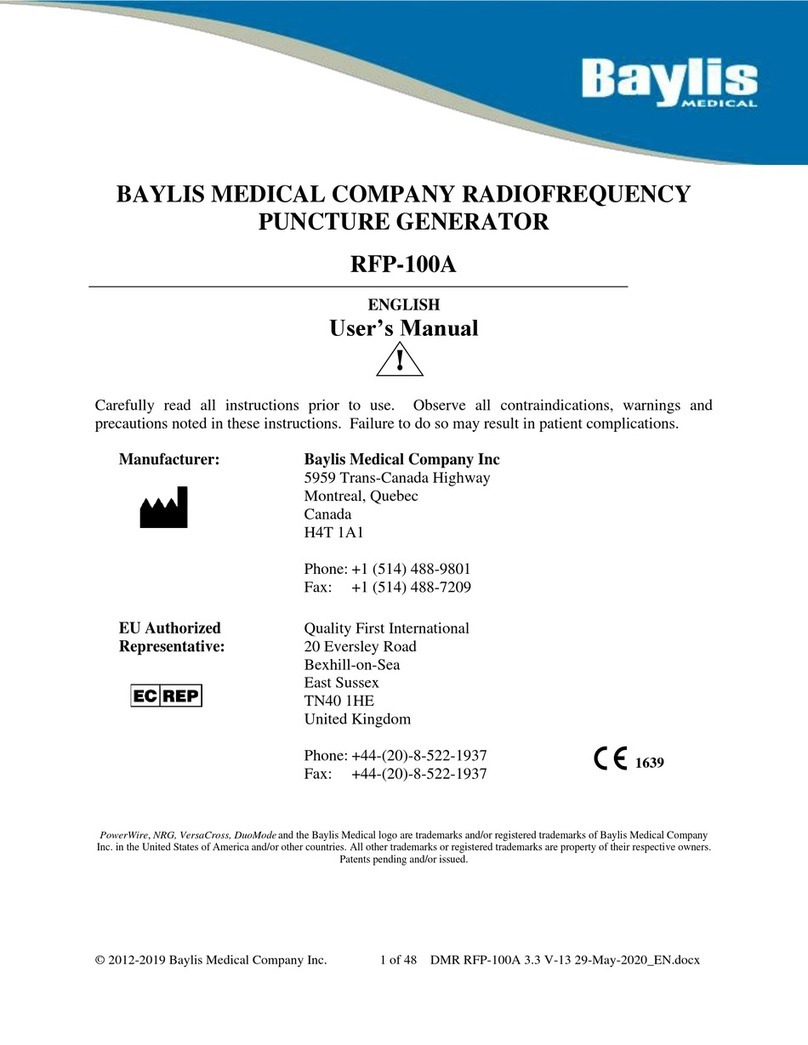Smart Generators Motorhead Plus SG13001 User manual

Smart Generators Operating Instructions SG13001
Please read and save these instructions. Read carefully before attempting to assemble, install, operate or maintain the product described. Protect
yourself and others by observing all safety information. Failure to comply with instructions could result in personal injury and/or property damage!
Retain instructions for future reference.
The Motorhead®Plus Dual Fuel Generator
Unpacking
When unpacking the unit, carefully inspect
for signs of obvious or concealed freight
damage. If damage does exist, file a claim
with the transportation company
immediately. Be sure that all damaged
parts are replaced and that the
mechanical and electrical problems are
corrected prior to operation of the unit..
Specifications
Engine…………Honda GX690HVXC2
Watts (AC) Rated……….13 kW (LP)
12 kW (NG)
Watts (AC) Max…….…...23 kW (LP)
18 kW (NG)
Rated Voltage (AC)...........120V/240V
Cont. Amperage............108/54 A (LP)
100/50 A (NG)
Max. Amperage..........192/95.8 A (LP)
150/75 A (NG)
Frequency................................60 Hz
Weight……………..……...420 pounds
Dimensions (in)
31.5" x 24" (30" with wheels) x 37.5"
General Safety Information
READ OPERATING INSTRUCTIONS
Always become familiar with all the
instructions and warnings before
operating any generator
IMPORTANT SAFETY INSTRUCTIONS
To reduce the risk of injury, read
this operator’s manual completely
before using. When using this
product, the following basic
precautions should always be
followed:
1. Read all the instructions before
using the product.
2. Do not allow children or untrained
persons to operate the generator.
3. Do not operate the generator when
fatigued or under the influence of
drugs or chemicals. Stay alert. Watch
what you are doing.
4. Follow the maintenance instructions
specified in this manual.
5. Be sure the switch on electric
power tools is in the “OFF” position
before plugging them into the
generator.
6. Keep the immediate area free of all
bystanders.
7. Be sure each person who operates
this generator is properly instructed in
its safe operation.
8. Do not operate the generator or any
electrical tool in any area where water
or similar materials constitute an
electrical hazard to the operator. Do
not operate on wet surfaces, in rain or
in snow.
9. Always be sure that the generator
is on secure footing so that it cannot
slide or shift around, endangering
workers.
10. Avoid contacting the hot exhaust
manifold, muffler or cylinder(s).
Keep clear of all rotating parts.
11. Unless the tool or appliance
is double insulated, it must be
grounded through a properly
grounded receptacle. (See Preparing
the Generator, Grounding
Instructions). Tools and appliances
which have 3 prong plugs must be
plugged into extension cords and
electrical receptacles with 3 holes.
Before operating any electrical item,
be sure it is in good repair.
12. Beware of using this equipment
in confined spaces. Confined
spaces, without sufficient fresh air
ventilation,can contain dangerous
gases.
13. If your generator comes equipped
with a transport dolly, make sure
this unit is secure during operation
and when transporting to prevent
unexpected movement or rolling.
14. Use extreme caution when lifting
1

Smart Generators Operating Instructions SG13001
this generator. Use only designated
lifting hook to lift
this generator. This generator is
heavy so proper lifting techniques
should be used.
SAVE THESE INSTRUCTIONS
CARBON MONOXIDE-POISONOUS
GAS Use generator outdoors, away
from open windows, vents, or doors.
Generator exhaust contains carbon
monoxide - a poisonous gas that can
kill you. You CAN NOT smell or see
this gas. Never use a generator in
enclosed or partially-enclosed spaces.
Generators can produce high levels of
carbon monoxide very quickly.
When you use a portable generator,
remember that you cannot smell or
see carbon monoxide.
Even if you can’t smell exhaust fumes,
you may still be exposed to carbon
monoxide. If you start to feel sick,
dizzy, or weak while using a
generator, get to fresh air RIGHT
AWAY. DO NOT DELAY. The carbon
monoxide from generators can
rapidly lead to full incapacitation and
death.
If you experience serious symptoms,
get medical attention immediately.
Inform medical staff that carbon
monoxide poisoning is suspected. If
you experienced symptoms while
indoors, have someone call the fire
department to determine when it is
safe to re-enter the building.
Never operate the generator in an
explosive atmosphere, near
combustible materials or where
ventilation is not sufficient to carry
away exhaust fumes.
Exhaust fumes can cause serious
injury or death.
NEVER use a generator indoors,
including in homes, garages,
basements, crawl spaces, and other
enclosed or partially-enclosed areas,
even with ventilation. Opening doors
and windows or using fans will not
prevent carbon monoxide build-up in
the home.
Follow the instructions that come
with your generator. Locate the
unit outdoors and away from doors,
windows, and vents that could allow
the carbon monoxide gas to come
indoors.
ONLY run generator outdoors and
away from air intakes.
NEVER run generator inside homes,
garages, sheds, or other
semi-enclosed spaces. These spaces
can trap poisonous gases EVEN IF
you run a fan or open doors and
windows.
If you start to feel sick, dizzy, or weak
while using the generator, shut if off
and get fresh air RIGHT AWAY. See a
doctor. You may have carbon
monoxide poisoning.
Install battery-operated carbon
monoxide alarms or plug-in carbon
monoxide alarms with battery back-
up in your home, according to the
manufacturer’s installation
instructions.
The carbon monoxide alarms should
be certified to the requirements of
the latest safety standards for carbon
monoxide alarms. (UL 2034, IAS 6-96,
or CSA 6.19.01).
Test your carbon monoxide alarm
frequently and replace dead batteries.
SAFETY WARNING WHEN
REFUELING
Natural Gas/LP is extremely
flammable and its vapors can explode
if ignited.
Observe all safety regulations for the
safe handling of fuel.
NEVER store fuel for your generator
in the home. Gasoline, propane,
kerosene, and other flammable liquids
should be stored outside of living
areas in properly-labeled, non-glass
safety containers. Do not store them
near a fuel-burning appliance, such as
a natural gas water heater in a
garage. If the container is not sealed
properly, invisible vapors from the fuel
can travel along the ground and can
be ignited by the appliance pilot light
or by arcs from electric switches in the
appliance.
ELECTRICAL HAZARDS. This
product must be grounded. If it
should malfunction or breakdown,
grounding provides a path of least
resistance for electric current to
reduce the risk of electric shock.
Improper connection of the equipment-
grounding conductor can result in a risk
of electrocution. Check with a qualified
electrician or service person if you
are IN doubt as to whether the unit is
properly grounded.
This generator is equipped with a
grounding terminal for your protection.
Always complete the ground path
from the generator to an external
ground source as instructed in the
section labeled “Grounding
Instructions” in the Preparation
section of this manual.
The generator is a potential source of
electrical shock if not kept dry. Keep
the generator dry and do not use in
rain or wet conditions. To protect from
moisture, operate it on a dry surface
under an open, canopy-like structure.
Dry your hands if wet before touching
the generator.
Plug appliances directly into the
generator. Or, use a heavy duty,
outdoor- rated extension cord that is
rated (in watts or amps) at least equal
to the sum of the connected appliance
loads. Check that the entire cord is
free of cuts or tears and that the plug
has all three prongs, especially a
grounding pin.
NEVER try to power the house wiring
by plugging the generator into a wall
outlet, a practice known as “back
2

Smart Generators Operating Instructions SG13001
feeding”. This is an extremely
dangerous practice that presents an
electrocution risk to utility workers and
neighbors served by the same utility
transformer. It also bypasses some of
the built-in household circuit
protection devices.
If you must connect the generator to
the house wiring to power appliances,
have a qualified electrician install the
appropriate equipment in accordance
with local electrical codes. Or, check
with your utility company to see if
it can install an appropriate power
transfer switch.
For power outages, permanently
installed stationary generators are
better suited for providing backup
power to the home. Even a properly
connected portable generator can
become overloaded. This may result
in overheating or stressing the
generator components, possibly
leading to a generator failure.
GROUNDING INSTRUCTIONS
This product must be grounded. If it
should malfunction or breakdown,
grounding provides a path of least
resistance for electric current to
reduce the risk of electric shock.
Improper connection of the equipment-
grounding conductor can result in a risk
of electrocution. Check with a qualified
electrician or service person if you
are in doubt as to whether the unit is
properly grounded.
The ground terminal on the frame
must always be used to connect the
generator to a suitable ground source.
The ground path should be made with
#8 size wire. Connect the terminal of
the ground wire between two star
washers and nut then tighten the nut
fully. Connect the other end of the
wire securely to a suitable ground
source.
The National Electric Code contains
several practical ways in which to
establish a good ground source.
Examples given below illustrate a few
of the ways in which a good ground
source may be established.
A metal underground water pipe
in direct contact with the earth
for at least 10 feet can be used as
a grounding source. If an pipe is
unavailable, an 8 foot length of pipe or
rod may be used as the ground
source.
The pipe should be 3/4 inch trade size
or larger and the outer surface must
be non corrosive. If a steel or iron rod
is used it should be at least 5/8 inch
diameter and if a nonferrous rod is
used it should be at least 1/2 inch
diameter and be listed as material for
grounding. Drive the rod or pipe to a
depth of 8 feet. If a rock bottom is
encountered less than 4 feet down,
bury the rod or pipe in a trench. All
electrical tools and appliances
operated from this generator, must be
properly grounded by use of a third
wire or be
“Double Insulated”.
It is recommended to:
1. Use electrical devices with 3 prong
power cords.
2. Use an extension cord with a 3 hole
receptacle and a 3 prong plug at the
opposite ends to ensure continuity of
the ground protection from the
generator to appliance.
We strongly recommend that all
applicable federal, state and local
regulations relating to grounding
specifications be checked and
followed.
LINE TRANSFER SWITCH
If this generator is used for standby
service, it must have a transfer switch
between the utility power service and
the generator. The transfer switch not
only prevents the utility power from
feeding into the generator, but is also
prevents the generator form feeding
out into the utility company’s lines.
This is intended to protect the
serviceman who may be working on a
damaged line.
THIS INSTALLATION MUST BE DONE BY
A LICENSED ELECTRICIAN AND ALL
LOCAL CODES MUST BE FOLLOWED.
ENGINE OIL
Oil is a major factor affecting
performance and service life. Use 4-
stroke automotive detergent oil.
Recommended Oil: Use 4-stroke
motor oil that meets or exceeds
the requirements for API service
classification SJ, SL, or equivalent.
Always check the API service label on
the oil container to be sure it includes
the letters SJ, SL, or equivalent.
SAE 10W-30 is recommended for
general use. Other viscosities shown
in the chart may be used when the
average temperature in your area is
within the indicated range.
Pre-Operation
To fill with oil:
1. Level the engine to ensure accurate
inspection and to prevent overfilling.
2. Remove the dipstick and wipe it
clean.
3. Fully insert the dipstick then
remove it to check the oil level.
NOTE: When checking the oil be sure the
engine is level.
4. If the oil level is low, remove the
filler cap, and fill to the upper limit
mark on the dipstick with the
recommended oil.
5. Reinstall the filler cap.
NOTE: Running the engine with a low
oil level can cause engine damage.
The Oil Alert system (applicable
types) will automatically stop the
engine before the oil level falls below
the safe limit. However, to avoid the
inconvenience of an unexpected
3

Smart Generators Operating Instructions SG13001
shutdown, always check the engine oil
level before startup.
Operation
ELECTRIC START
NOTE: Read Operator’s Manual carefully
before operating this unit. Always
make sure the unit is level and properly
grounded. Check engine oil before
starting.
1. Fuel selection is performed at the
T-joint. Set up the T-joint for its
intended gas usage (LP or NG). (The
first picture shows the regulator setup
for LP and the second picture shows
the regulator setup for NG.)
2. Connect and tighten the fuel hose
fitting to the proper outlet.
3. Install the cap to plug the T-joint
outlet that is not used.
4. Attaching the Propane (LP) or
Natural Gas (NG) hose to the
generator. Attach the propane or
natural gas hose to the male flare
fitting on the front of the low pressure
regulator using a wrench. Do not over
tighten.
Note: The LP and NG hoses use
different sized adapters.
5. Attaching the Propane (LP) or
Natural Gas (NG) hose to the fuel
source. The other end of the hose
must be connected to
(1) the LP tank by inserting the
reverse thread POL (located on the
regulator end of the hose) into a
propane tank using a wrench. Make
sure the hose is secure. Or
(2) the Natural Gas outlet. The NG
hose comes equipped with a quick
connect male located at the end of the
hose and female quick connect
coupler. (The female quick connect
coupler must be connected to your
Natural Gas outlet prior to use. Use a
wrench and pipe dope to promote a
safe seal.) Insert the male end of the
quick connect into the female coupler
by pulling back on the outside ring on
the female end of the quick connect,
inserting the quick connect male end
of the hose into it and releasing the
ring. (The NG hose does not have an
additional regulator on it)
7. Open the valve on the propane tank
or natural gas outlet.
8. The priming button is located on the
backside of the low pressure
regulator. Purge the fuel line of air by
gently pressing the primer button for a
few seconds.
9. The starter key hole is located on
the control box located on the front
right side of the engine. Insert the key
and turn it to the START position and
hold until engine starts. (clockwise)
10. When the engine starts, release
key, allowing it to return to the ON
position, which is the middle position.
NOTE: Do not crank the engine
continuously for more than 30 seconds
at a time. If the engine does not start,
allow for a 3 minute cool down period
between starting attempts. Failure to
follow these guidelines can damage the
starter motor.
If the starter does not turn the engine
over, shut off the starter immediately.
Do not make further attempts to
start the engine until the condition
is corrected. Do not jump start using
another battery.
10. Allow unit to run two (2) minutes to
warm-up before plugging a cord into
the electrical outlets.
4

Smart Generators Operating Instructions SG13001
Using as a Portable Power Source
When using the generator as a
portable power source, you can plug
electric devices and appliances
directly into the generator's electrical
outlets.
There are different kinds of electrical
outlets on your generator:
1. 120/240 Volt, 30 Amp locking
receptacle (NEMA L14-30R locking
receptacle compatible with L14-30P
mating plug).
2. Two 120 Volt, 20 Amp, duplex
GFCI-protected straight-blade
receptacles (NEMA 5-20R duplex
receptacles compatible with NEMA
5-20P or 5-15P mating plugs)
3. 120/240 Volt, 50 Amp straight-blade
receptacle (NEMA 14-50R receptacle
compatible with NEMA 14-50P mating
plug)
4. Make sure you plug each electrical
device/appliance into the correct
generator outlet based on the device’s
plug configuration and
voltage/amperage rating. Never
exceed the amperage rating of an
outlet.
5. Extension cords may be used to
power devices that are located at a
distance from the generator. However,
use only UL-listed, outdoor rated,
grounded extension cords of the
proper size.
NOTE: This engine is equipped with a
“Low Oil” shutdown system for engine
protection. The engine stops when the
oil level gets too low. The engine will
not restart without adding oil. Refer to
Preparing the Generator; Engine Fuel
Capacity for instructions on adding oil.
NOTE: While the engine is idling, the
generator voltage is automatically
reduced to reduce generator
temperatures. The voltage will return
to normal levels immediately upon the
application of load.
SHUTDOWN
1. Remove all load by turning off
electrical appliances and unplugging
electric cords.
2. Allow engine to run at idle speed to
cool for two (2) minutes.
NOTE: Failure to allow the engine to cool
at idle for two (2) minutes may result in
damage to the generator.
3. Turn the starter key to the OFF
position. (counter clockwise)
4. Close the valve on the propane
tank or natural gas outlet.
GENERATOR MAINTENANCE
Keep all air vents clear.
Keep the generator clean. DO NOT
spray with water.
Periodically check all fasteners and
tighten, see the periodic maintenance
chart.
5

Smart Generators Operating Instructions SG13001
LIMITED WARRANTY
SMART GENERATORS THREE-YEAR LIMITED WARRANTY. SMART GENERATORS MODELS COVERED IN THIS
MANUAL, ARE WARRANTED BY SMART GENERATORS LLC. TO THE ORIGINAL USER AGAINST DEFECTS IN
WORKMANSHIP OR MATERIALS UNDER NORMAL USE FOR THREE YEARS AFTER DATE OF PURCHASE. ANY
PART WHICH IS DETERMINED TO BE DEFECTIVE IN MATERIAL OR WORKMANSHIP AND RETURNED TO AN
AUTHORIZED SERVICE LOCATION, AS SMART GENERATORS DESIGNATES, SHIPPING COSTS PREPAID, WILL
BE, AS THE EXCLUSIVE REMEDY, REPAIRED OR REPLACED AT SMART GENERATORS OPTION. FOR LIMITED
WARRANTY CLAIM PROCEDURES, SEE “PROMPT DISPOSITION” BELOW. THIS LIMITED WARRANTY GIVES
PURCHASERS SPECIFIC LEGAL RIGHTS WHICH VARY FROM JURISDICTION TO JURISDICTION.
LIMITATION OF LIABILITY. TO THE EXTENT ALLOWABLE UNDER APPLICABLE LAW, SMART GENERATORS
LIABILITY FOR CONSEQUENTIAL AND INCIDENTAL DAMAGES IS EXPRESSLY DISCLAIMED. SMART
GENERATORS LIABILITY IN ALL EVENTS IS LIMITED TO AND SHALL NOT EXCEED THE PURCHASE PRICE PAID.
WARRANTY DISCLAIMER. A DILIGENT EFFORT HAS BEEN MADE TO PROVIDE PRODUCT INFORMATION AND
ILLUSTRATE THE PRODUCTS IN THIS LITERATURE ACCURATELY; HOWEVER, SUCH INFORMATION AND
ILLUSTRATIONS ARE FOR THE SOLE PURPOSE OF IDENTIFICATION, AND DO NOT EXPRESS OR IMPLY A
WARRANTY THAT THE PRODUCTS ARE MERCHANTABLE, OR FIT FOR A PARTICULAR PURPOSE, OR THAT THE
PRODUCTS WILL NECESSARILY CONFORM TO THE ILLUSTRATIONS OR DESCRIPTIONS. EXCEPT AS
PROVIDED BELOW, NO WARRANTY OR AFFIRMATION OF FACT, EXPRESSED OR IMPLIED, OTHER THAN AS
STATED IN THE “LIMITED WARRANTY” ABOVE IS MADE OR AUTHORIZED BY SMART GENERATORS.
Technical Advice and Recommendations, Disclaimer. Notwithstanding any past practice or dealings or trade custom,
sales shall not include the furnishing of technical advice or assistance or system design. SMART GENERATORS
assumes no obligations or liability on account of any unauthorized recommendations, opinions or advice as to the choice,
installation or use of products.
Product Suitability. Many jurisdictions have codes and regulations governing sales, construction, installation, and/or use
of products for certain purposes, which may vary from those in neighboring areas. While attempts are made to assure that
SMART GENERATORS products comply with such codes, SMART GENERATORS cannot guarantee compliance, and
cannot be responsible for how the product is installed or used. Before purchase and use of a product, review the product
applications, and all applicable national and local codes and regulations, and be sure that the product, installation, and
use will comply with them. Certain aspects of disclaimers are not applicable to consumer products; e.g., (a) some
jurisdictions do not allow the exclusion or limitation of incidental or consequential damages, so the above limitation or
exclusion may not apply to you; (b) also, some jurisdictions do not allow a limitation on how long an implied warranty lasts,
consequently the above limitation may not apply to you; and (c) by law, during the period of this Limited Warranty, any
implied warranties of implied merchantability or fitness for a particular purpose applicable to consumer products
purchased by consumers, may not be excluded or otherwise disclaimed.
Prompt Disposition. A good faith effort will be made for prompt correction or other adjustment with respect to any
product which proves to be defective within limited warranty. For any product believed to be defective within limited
warranty, first write or call dealer from whom the product was purchased. Dealer will give additional directions. If unable to
resolve satisfactorily, write to Dayton at address below, giving dealer’s name, address, date, and number of dealer’s
invoice, and describing the nature of the defect. Title and risk of loss pass to buyer on delivery to common carrier. If
product was damaged in transit to you, file claim with carrier.
6

Smart Generators Operating Instructions SG13001
Manufactured by Smart Generators, LLC, 1010 Central Ave, Woodmere NY 11598 U.S.A.
Toll Free: 844-TRI-FUEL Local: 516-224-3363
7
Table of contents
Other Smart Generators Portable Generator manuals
Popular Portable Generator manuals by other brands
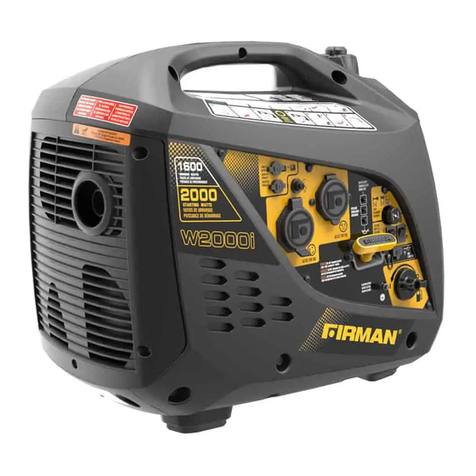
Firman
Firman W01682 Operator's manual
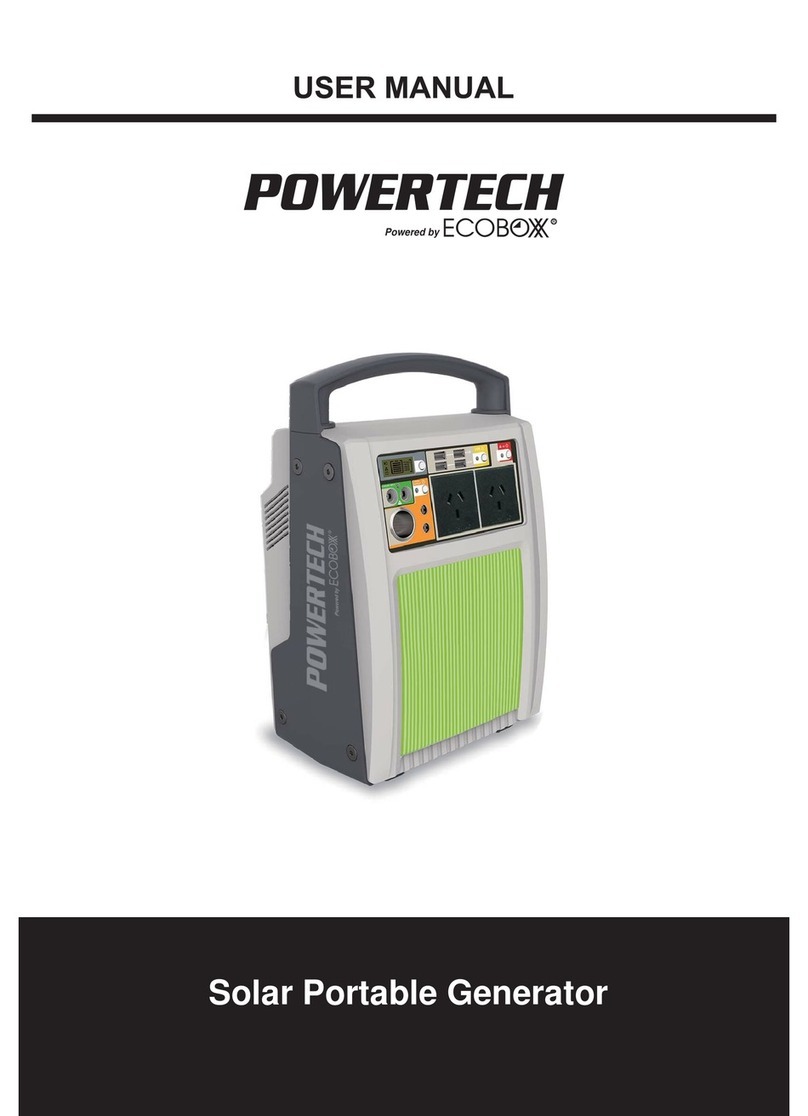
PowerTech
PowerTech MB3740 user manual

Honeywell
Honeywell HW5500 - 5500 Portable Generator Specification sheet

LawnMaster
LawnMaster BQH3500 Safety and operating manual

Advance acoustic
Advance acoustic SG62B instruction manual
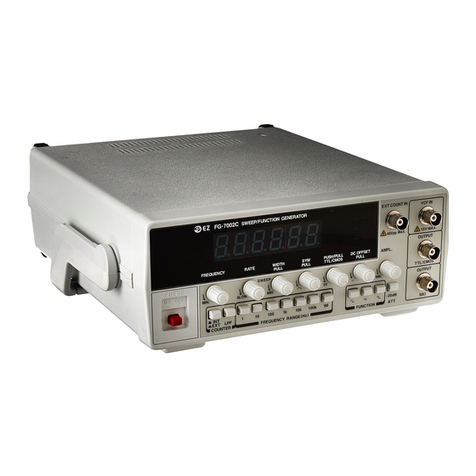
EZ Digital
EZ Digital FG-7002C Operation manual
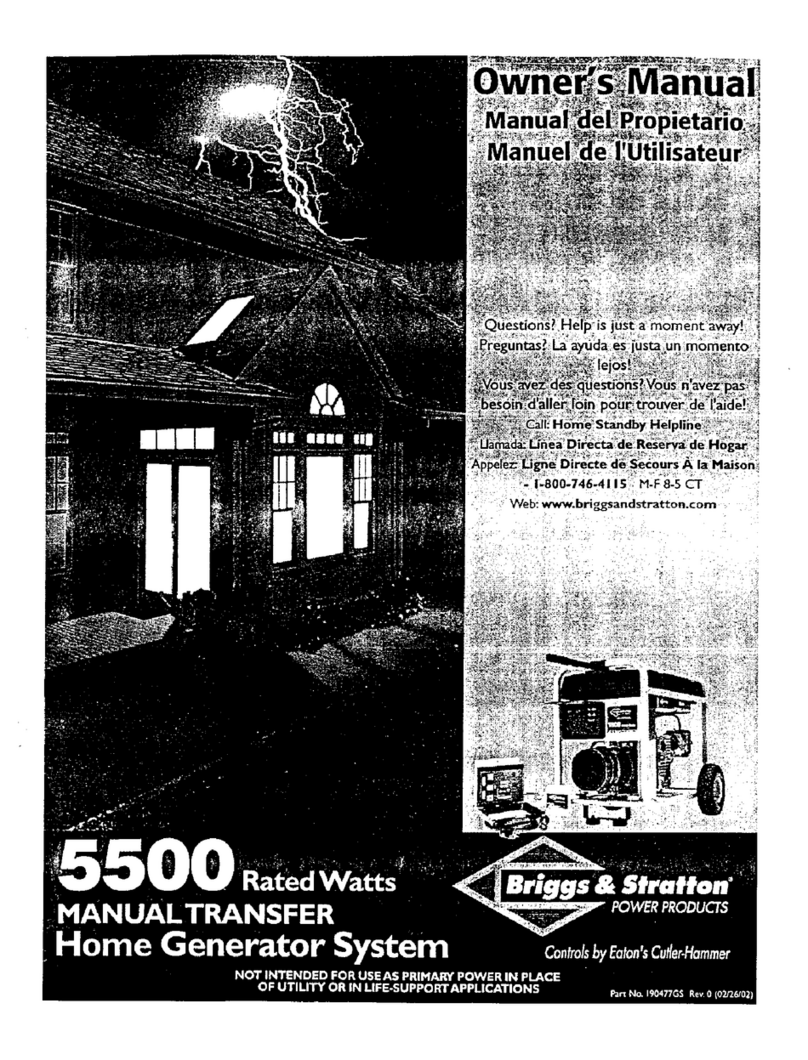
Briggs & Stratton
Briggs & Stratton Generator owner's manual
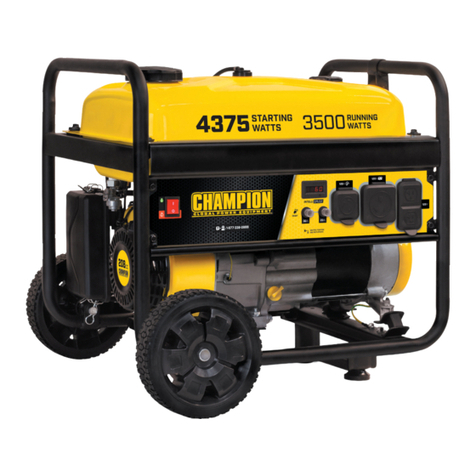
Champion Global Power Equipment
Champion Global Power Equipment 100522 quick start guide
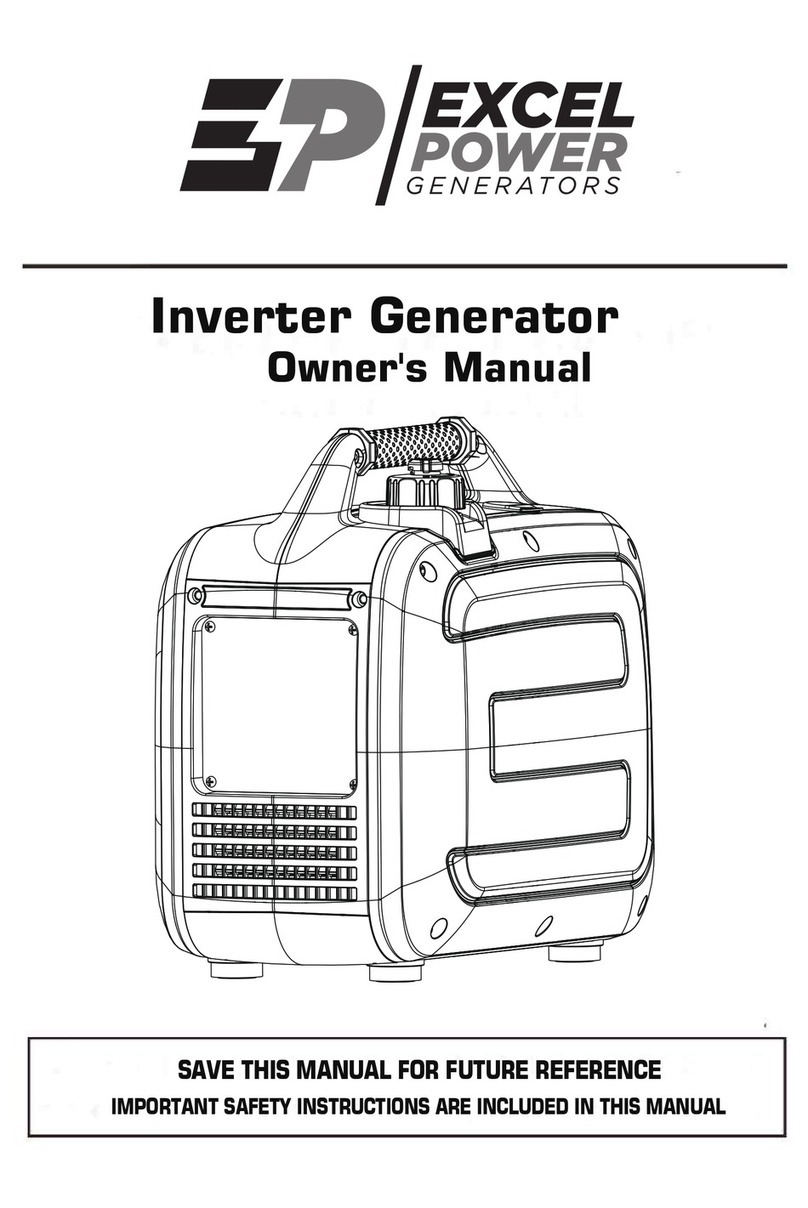
Excel Power
Excel Power XL2200i owner's manual
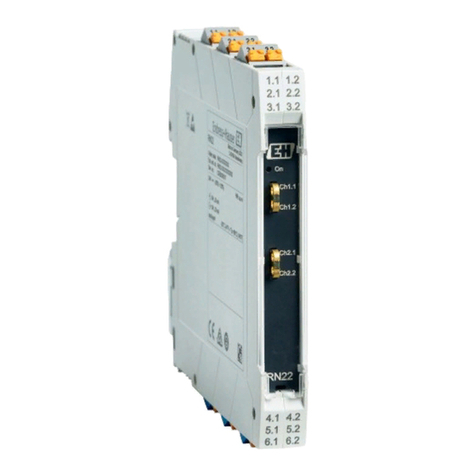
Endress+Hauser
Endress+Hauser RN22 operating instructions
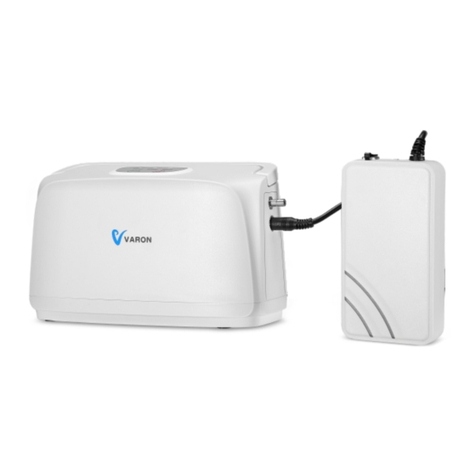
VARON
VARON NT-3 user manual
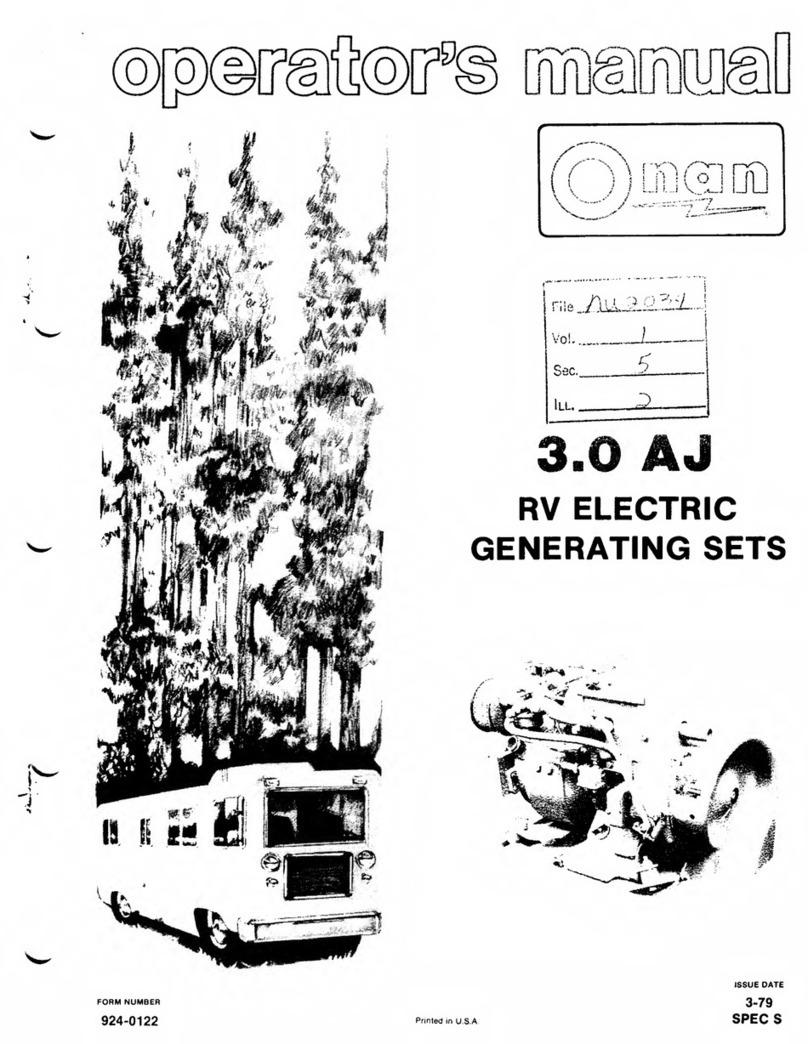
Onan
Onan 3.0 AJ Operator's manual
